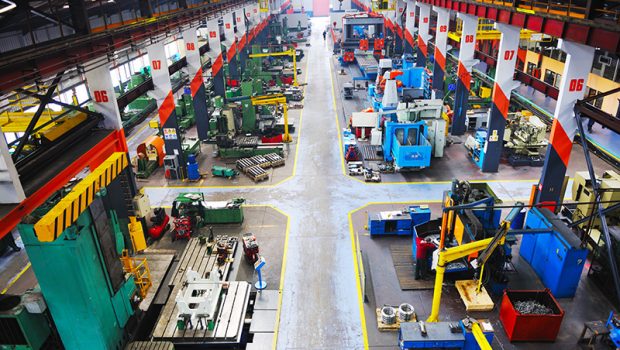The Manufacturing Industry: Propelling Technology Forward
Business is an ever-expanding, technology-driven force that continues to grow through countless advancements and improvements in what we already know to be tried and true solutions. As for the manufacturing industry, there have been countless up’s and downs throughout the last decade alone and yet, despite the effects of the recession, the manufacturing industry as a whole continues to be a detrimental component of business and economic growth in America.
However, the manufacturing industry has also proven to drive technology forward in the last decade likewise and, through advancements in the conversion of power to energy, electrical energy to mechanical energy, and even asset management, the manufacturing industry has proven to propel technology, business, and the industry itself forward.
1. Converting Power into Energy: Gas Turbine Power Plants
A gas turbine, also called a combustion turbine, is a type of internal combustion engine powered by an upstream rotating compressor coupled to a downstream turbine. The use of gas turbines for generating electricity has been around for centuries but have often been referred to as an inefficient way of creating energy due to their reliance on fossil fuels to create the power needed to complete the energy conversion.
However, by assessing and improving upon the internal parts that make these turbines work, you can optimize your energy efficiency and not be forced to convert to a more efficient source. The compressor, similar to the ones manufactured in HVAC companies, can easily be replaced for more energy efficient models and, if you rely on air compressors in your factory, the same can be said for those as well. On top of this, regarding air compressors, creating a variable speed drive (VSD) as opposed simple on-and-off methods allow you to supply a steady airflow without exceeding unnecessary limits in the process.
Many manufacturing companies in the compressor industry have taken notice to this and have even helped to simply create more effective, energy efficient, and easily maintainable compressors to help business-owners get the most out of their factories and their offices alike. Keeping track of the multiple ways to improve compressor energy efficiency can actually help you to save money and decrease your carbon footprint while being a part of yet another technological advancement propelled by the manufacturing industry.
2. Electrical Energy to Mechanical Energy: Electric Motor Efficiency
An electric motor may seem simple but is rather complex in nature. The electric motor uses magnetism, inertia, angular momentum, and both Faraday’s theories of electric current as well as Tesla’s theories of alternating current to convert electrical energy into mechanical energy in order to power things as simple as a lawnmower all the way to things as complex as massive factories and plants.
Although the electric motor has been often given a bad rap due to its massive use of global electricity, there have been countless technological advancements in the electrical motor’s energy efficiency in the last decade which have helped form a brighter future for this form of energy conversion. There are multiple companies that have created energy efficient electric motors to help you reduce your electricity costs and save energy as well. Despite the electric motor typically being a hassle, by finding a quality electric motor company that understands the advancements necessary to push their technology into the future rather than the past, you can begin to see the effects of energy efficiency in your business today.
Still, if you choose to stick with the electric motors you currently have, by assessing and maintaining your motors properly to optimize your electric motor efficiency, you can still see some of the benefits of a more energy efficient motor despite it not being originally manufactured as such.
3. Asset Management: Preventative Maintenance
Preventative Maintenance has continued to be a tried and true way to manage your assets effectively and avoid downtime, bottlenecking, and equipment failure in the manufacturing industry and beyond. Being efficient as a company means less money is spent on wasted time and more products are created in a shorter period.
By using preventative maintenance tactics efficiently, you can increase business productivity as well as profitability and use this technology to start 2017 off fresh and ready for business. In order to know what preventative maintenance techniques best fit you, however, you must first self assess to determine your current state. With this information you can determine what you would like to improve on and how to do it using technological advancements in these preventative measures as an effective tool. You will surely see your cost-effectiveness as well as your work management improve in no time and the workflow will become smooth and easily manageable likewise as you embark on yet another technological advancement brought forth by the manufacturing industry.
Despite technology expanding in nearly every facet of our world, the manufacturing industry never fails to show us countless ways to improve workflow, increase energy efficiency, decrease our carbon footprint, reduce electricity usage, and form a brighter future for employees and employers alike. The best way to stay ahead of the curve is to simply follow the trends set by the best in the industry and see their massive effects in your business today.








![Mobility Scooters 2.0 [Infographic]](https://technofaq.org/wp-content/uploads/2018/04/Mobility-Scooters-Infographic-150x150.jpg)







